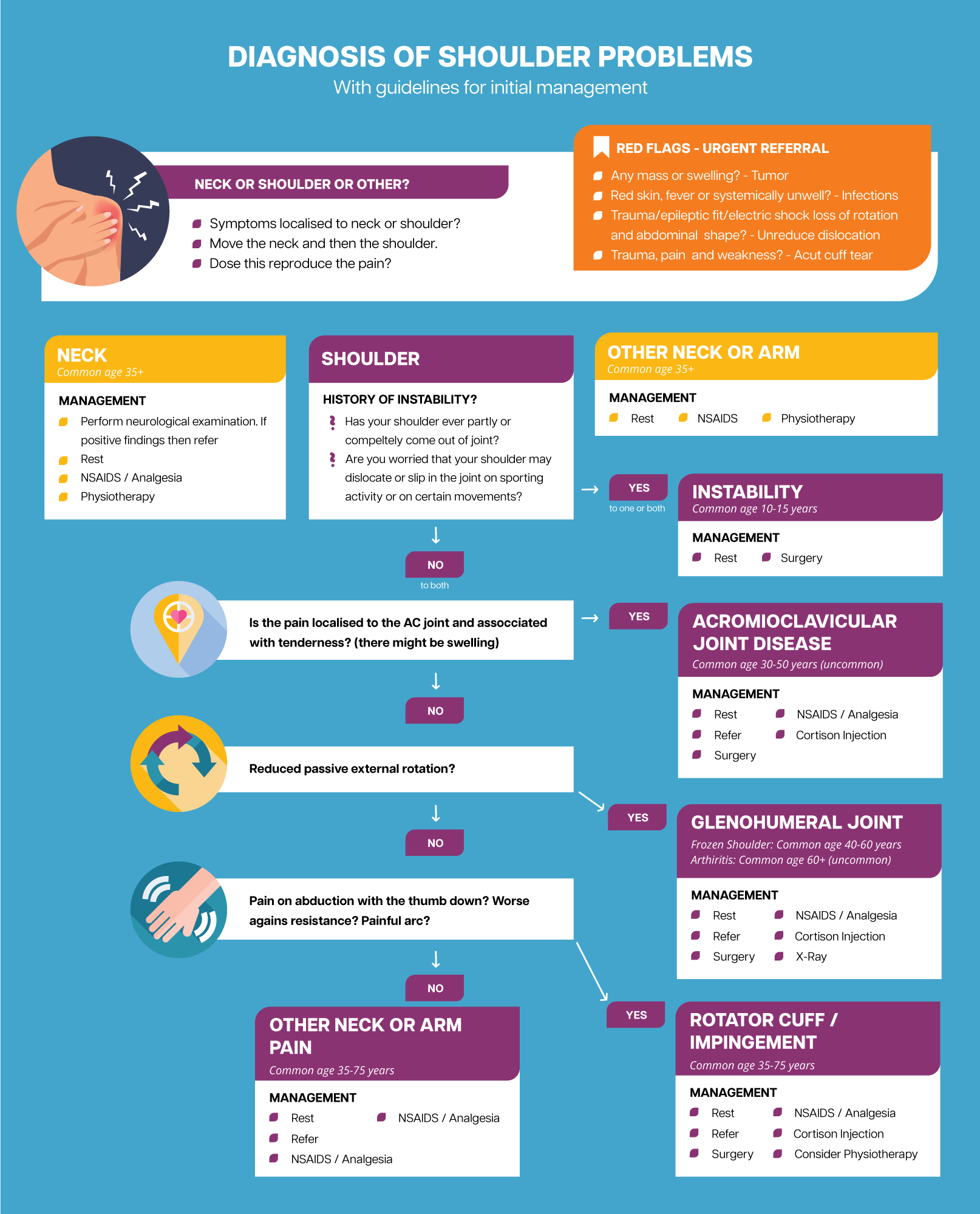Reading material on improving movement analysis and therapy
Information on the most common mechanisms of shoulder joint and shoulder blade problems, possibilities of using other clinical tests. Treatment pathways and recommendations. (extension of this information available in the e-manual)
A method of assessment of shoulder pain symptom complexes and guidelines to support the decision on the patient’s future life course are available, but the decision must always be individualised in the context of the individual and the environment.
Treatment planning should take into account a number of factors, such as the patient’s clinical condition, functional status, mental and cooperative abilities, capabilities, and other factors that determine treatment goals.
The extent to which outcomes are achieved is based on the joint teamwork of the practitioner and the person being treated, so this type of relationship should be characterised by adequate information and shared responsibility from the outset. The highest level of cooperation (coherence) influences the effectiveness and sustainability of outcomes, so the aim is to establish a partnership from the patient assessment onwards.
Of course, this responsibility comes with risk. Diagnosis is not always clear, many underlying causes may only surface later and misdiagnosis leads to inefficiency. The patient should be aware that the physiotherapist, however well trained, and however “often seen” the problem, cannot be relied upon to make safe predictions.
The ambiguous causal background often arises from simple interrelationships, generalising, affecting multiple segments and formulas (spinal segments, upper limb), triggering neurological effects (e.g. proprioceptor problems, antalgic movement fixation, chronic pain syndrome, fear of pain).
In addition, in the case of shoulder problems, the combined results of the clinical and functional examination can be well evaluated, providing guidance for setting treatment goals and determining the techniques to be used.
In order to start the examination, it is advisable to make use of the available guidelines, which, in simple or more complex form, include the pathologies that should be excluded, if possible, before starting treatment.



Leave a Reply
Want to join the discussion?Feel free to contribute!